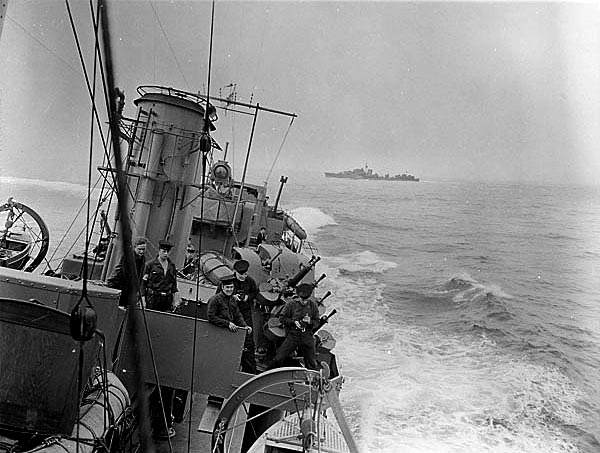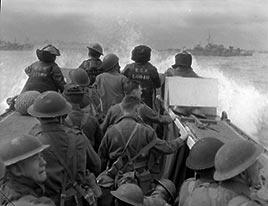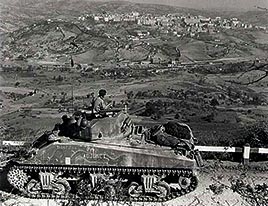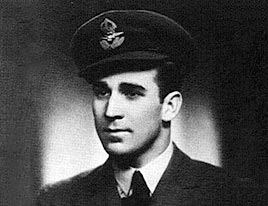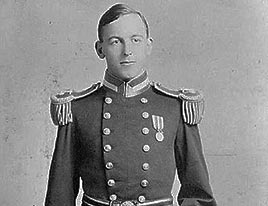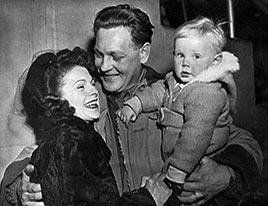Canada Remembers Times - 2014 Edition - Page 2
Remembering the Second World War
HMCS Assiniboine on the Atlantic Ocean during the Second World War.
(Photo: Library and Archives Canada PA-180611)
Following the approval of the Canadian Parliament, Canada officially entered the Second World War on September 10, 1939, and would spend almost six years locked into the largest conflict the world had ever seen. Canadians bravely served on land, at sea and in the air against the totalitarian Axis powers of Germany, Japan and Italy. They saw action around the world, from Hong Kong to the dusty mountains of Italy, from the dangerous skies over occupied Europe to the freezing seas of the North Atlantic.
More than one million Canadian men and women served during the conflict and over 45,000 gave their lives. Our country’s society was forever transformed by the mammoth war effort. This year will see the beginning of a series of special Second World War 75th anniversary commemorative events in Canada and internationally that will stretch until 2020. Check out the Veterans Affairs Canada website to find an event near you!
D-Day: 70 Years Later
Canadians approaching D-Day beaches during the Second World War.
(Photo: Library and Archives Canada PA-13279)
If you were to walk today on the beaches of Normandy, France, you would likely be struck by their serenity and beauty. But 70 years ago, the Canadian soldiers who went ashore there on D-Day were met with a very different scene.
By mid-1944, Germany had occupied much of Western Europe for four years. To defend the conquered territory, the Germans heavily fortified the coast with mines, beach obstacles, barbed wire, heavy artillery, machine guns and troops. An Allied assault would be an enormous challenge and would take years of careful preparation. On June 6, 1944, the time had finally come. Canadian, British and American forces landed along an 80-kilometre stretch of shoreline in Northwest France, supported by a massive naval fleet and thousands of warplanes.
More than 14,000 Canadian soldiers went ashore at Juno Beach that day, with some 340 losing their lives. It was only the beginning of the tough Battle of Normandy, but the Allies had finally cracked the walls of Fortress Europe.
Canadians in the Italian Campaign
Canadian tank near Potenza, Italy. September 1943.
(Photo: Library and Archives Canada PA-144103)
At dawn on July 10, 1943, the Allies launched Operation Husky, the invasion of Sicily. This sun-baked Mediterranean island would be captured after weeks of hard fighting. This was only the beginning of the Second World War’s bitter Italian Campaign, in which the Canadians would play an important role.
After the Allies went ashore in mainland Italy on September 3, 1943, they faced a difficult advance against skilled German troops. The Allies kept pushing forward in the many months that followed despite the mountainous Italian terrain and challenging weather. In one well-known chapter of this campaign, during Christmas 1943, the Canadians were thrust into a fierce battle for Ortona. Stones from shattered buildings littered the coastal town’s steep and narrow streets, making it impossible for tanks to pass. Our soldiers grimly fought from building to building until Ortona was finally taken on December 28. The troops then continued their push north, fighting in the Liri Valley and helping breach the Hitler Line in central Italy.
Our troops would not take part in the final Allied victory in Italy, however. By February 1945, they had joined the 1st Canadian Army in Northwestern Europe. The Canadians had fought bravely in Italy, but this came at a high cost. They suffered approximately 26,000 casualties, including almost 6,000 dead.
The Berlin Kid
Roger Coulombe during the Second World War.
(Photo: Fondation Aérovision Québec)
Roger Coulombe was born in Montmagny, Quebec, in 1920. He enlisted in the Royal Canadian Air Force in 1940 during the Second World War and became a pilot with Bomber Command. He flew on Lancaster planes with the No.426 “Thunderbird” Squadron.
Flight-Lieutenant Coulombe completed an operational tour of 30 missions, which was an impressive accomplishment as it was extremely dangerous duty. His bomber was once attacked by two German fighters, but Coulombe managed to escape and safely land his crippled aircraft.
Of Coulombe’s 30 missions, he flew a record 12 raids over Berlin, the most heavily defended city in Germany. A raid on Berlin, deep inside German territory, meant flying for more than seven hours through a gauntlet of enemy fighter planes and formidable anti-aircraft defenses. Coulombe was nicknamed “The Berlin Kid” and awarded the Distinguished Flying Cross.
After the war, Coulombe became a dentist. He was inducted in the Quebec Air and Space Hall of Fame in 2003 and died in 2010.
Canada’s Most Decorated Naval Officer
Frederic Peters.
(Photo: Public Domain)
Prince Edward Island-born Frederic “Fritz” Peters had the rare distinction of receiving medals for valour in both the First and the Second World War.
After growing up in British Columbia, he joined the Royal Navy in 1905 at the age of 16. He was serving aboard HMS Meteor during the First World War when it was torpedoed by a German cruiser in January 1915. With incredible calmness, Peters rushed to the burning engine room and saved the ship. This action earned him the Distinguished Service Order—a first for a Canadian. He was decorated again in 1918 when he received the Distinguished Service Cross for his skills in attacking enemy submarines.
Peters returned to service in the Second World War and saw action during an invasion of North Africa. On November 8, 1942, Peters’ ship entered an enemy harbour and the vessel was damaged by point-blank fire. He still managed to land his ship and secure the lines so the surviving troops could disembark. Unfortunately, the ship took a direct hit in the engine room that blew Peters off the bridge. Blinded in one eye, he was one of the few survivors.
Peters was flying back to England five days later to report on the mission when his plane crashed at sea and he was killed. He was posthumously awarded the highest decorations for valour he could receive from the United States and Britain—the U.S. Distinguished Service Cross and the Victoria Cross.
The Lord of the Rings
Sam Jacks returning from the war, met by his bride Agnes and their son Barry.
(Photo: Bruce Jacks, family memorabilia)
Sam Jacks was an inventor and a Canadian soldier. He was born in Scotland in 1915, and his family immigrated to Canada when he was six years old. In his twenties, Jacks introduced a new game played in a gym using a straight stick and a felt ring. He called this Floor Hockey, and later created the first official rules.
Jacks served with the 1st Canadian Parachute Battalion during the Second World War. While in England, he met and married Agnes, who was a worker at a munitions factory. She immigrated with their son Barry to Canada as a war bride.
Sam Jacks wasn’t done with sports. He coached a junior Olympics track and field team and invented a new type of ice sport for girls. Using a ring instead of a puck, a straight stick and a special set of rules, ringette was born in 1963 in North Bay, Ontario. Over the last 50 years, ringette has thrived and is now played in rinks worldwide.
- Date modified:
